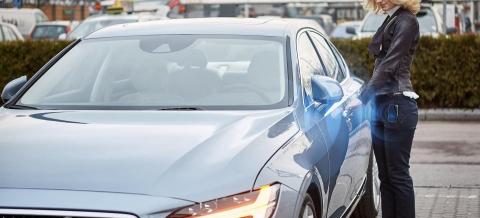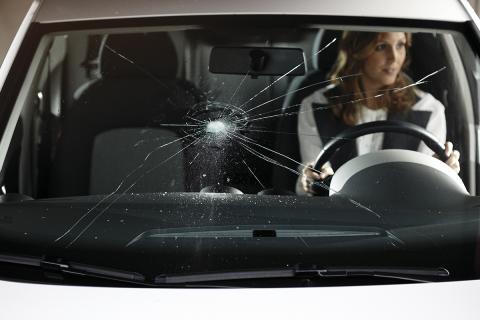Whether you find yourself in a downpour or if your car is flooded by torrential rains or simply because water enters a parking lot or a pipe has broken, it is convenient to know what to do in each case and without wasting time. Take note!
In the event of heavy rains, in this practical video, we teach you what to do in the face of waterspouts and possible floods. How to prevent these situations to avoid personal and mechanical damage? How to drive your car if you are involved in them? Who should you claim and how to do it in case there is no other remedy?
All means of transport are designed to withstand a certain amount of rain, puddles… From buses and trucks to scooters, even bicycles and motorcycles, they can become very suitable options for moving through the wet pavement of numerous streets or highways in exchange for greater freedom and speed in particularly congested areas.
However, when the amount of water that falls is excessive, it can be a danger to mechanical integrity and safety, even if you drive in the best of cars. Because not even SUVs escape this risk. And the fact of suffering downpours, floods and even floods is not something that is limited to the rainy season, to the so-called cold drop…
Nope; a downpour, a stuck garage grate, a pool of water or a burst pipe can surprise you at any time. For this reason, in this video, we are going to give you some very practical advice on how to prevent dangerous situations, how to act if you have not been able to avoid being involved in them… And, finally, how and to whom to claim the damages suffered.
How to prevent upsets?
When you’re already on the road, it’s a bit more difficult, of course, but it’s always possible to anticipate certain situations a bit. And for this reason, the first piece of advice we can give you is to be a little aware of the weather forecast, with the reports given by the different radio and television and internet information services.
In rainy seasons, you should also avoid secondary roads, because the main network always drains water more efficiently, the asphalt is more careful and clean, there is less vegetation and less risk of landslides nearby, the roads are better lit, road markings are more visible… and you will be able to leave traffic earlier and more safely if necessary.
Not to mention that, if something happens, you will have better coverage whether you use your home phone or if it is your car that activates the automatic emergency call… And the assistance, rescue or evacuation services will also locate and help you more quickly . In addition, you can always be a little aware of where to park.
It is obvious that parking in the open exposes your vehicle more to weather conditions, but you can always avoid ‘valley’ areas that flood earlier in case of torrential rains, valleys, places where you have to back out and go uphill with a great slope and it is more difficult to join the traffic…
And also beware of covered and underground parking, which can also become a deadly trap for your vehicle. If you enter them, or you are going to get a parking space to buy or rent, it is worth avoiding the floor that is deeper, since in case of flooding it will be where the water accumulates first.
How to drive if you are surprised by a downpour?
On the go, there are very effective tricks that can save you and your car from major complications as soon as water begins to be present in large quantities. To begin with, you have to have adequate lighting: dipped beam to see and be seen as soon as the brightness begins to suffer.
Sometimes, if you have automatic lighting, the short ones do not come on and, even if the daytime running lights are legal at that time of day, remember that the rear position lights will not turn on by themselves until the short ones are activated. In addition, also remember that driving only with the position ones is prohibited.
So it is convenient that, for all this, you go directly to the crossroads… And if a lot of water falls, you can optionally put the fog lights (if your car has them), but it is only allowed to put the rear fog lights (which are already standard decades ago) during very poor visibility conditions.
Speed. With a slippery surface, slow down, keep a greater distance from the vehicle in front and drive more smoothly than usual, without swerving, acceleration or sudden braking that could cause skidding, skidding, reaching or going off the road.
What you should not do is travel at too low a speed, so if you do not see it prudent to continue in these conditions, without losing your temper, leave traffic in accordance with the law and safety at the first possible exit. Don’t rush too much and don’t play it! The risk of aquaplaning or water planing is very great.
Although the highway code already says so, try to always drive in the right lane, so that you can maintain a safety distance a little greater than when dry, slow down as we said and leave the road if you consider it necessary, but without abruptly crossing from the left or center zone to the right.
Also keep in mind the risk of pools of water, those large puddles that sometimes accumulate on the asphalt. If you see them, hold the steering wheel firmly with both hands, slow down a little without touching the brake pedal and try to cross the area by giving a little gas so as not to lose traction. Try not to overtake or change lanes for free, even if the signs on that section allow it.
wades. Even in the city, large puddles should also be avoided at all costs, even if you drive a car with a certain height and think you can pass them. First, because the risk of getting blocked is enormous. Second, because there are manhole covers that ‘jump’ when the flow that flows underground overflows and leaves magnificent and dangerous holes.
It’s very easy to get a wheel in or even fall in if you have to walk out of the vehicle. And third: that big puddle you see may have deteriorated the asphalt or be the result of a broken pipe… and the hole may be much larger than you expected and may even be capable of swallowing your whole car (if you don’t believe it, I invite you to that you see on the internet the amount of videos of this type that are out there).
What if your car floods?
All of the above works to try to prevent or cope with excess water around your vehicle. But what happens if there is no remedy and when you go to pick it up on the surface or from a parking lot… it appears flooded? Because a strong downpour of water sometimes causes flooding, of course.
This is the worst case scenario, of course. But the less bad news is that even in this case, you can start making good decisions to get your vehicle back… or wrong ones and mess it up even more. Let me explain: if your car has been flooded, whether or not it already has water around it, do not try to start it.
Because if water has entered through the exhaust pipe to the engine (or mud or mud has clogged it or has clogged the intake ducts, exhaust pipes, filters, etc.) you could disable forever what is still perhaps recoverable. So before touching anything, contact your insurance to open a file and send an expert to detail the damage and make an assessment.
In the meantime, take as many photos and videos as you can where they are recorded: the place, the car model, the license plate, the date and the visible parts of the damage. It is about having graphic documents of how you found the car before moving it. And then, once the file is opened and everything is assessed, the ideal is for your insurance to manage it.
The fact that? The removal of the car from the place, so that, without starting the engine, it can be towed to your trusted workshop. There they will know how to finish drying it before starting it up. That is why it is best to have a roadside assistance service contracted, so that you are not forced to pay for a separate tow truck (which does not usually go below 100 euros).
With everything and with that, it’s time to claim. How? To who?
In principle, if the damage comes from an ordinary risk, it is your insurance in the all-risk mode (and always, according to the contracted policy), who will take care of covering the damage… or, of claiming the insurance of the person responsible for the accident in question if you think so. For example, to the owner of the car park, to the company that manages the broken pipe…
But what if the damage comes from an extraordinary risk? That is, by natural phenomena, such as floods, hurricanes or earthquakes? In those cases, you have to go to the Insurance Compensation Consortium, which, yes, will respond as long as your car is insured before the catastrophe has occurred.













